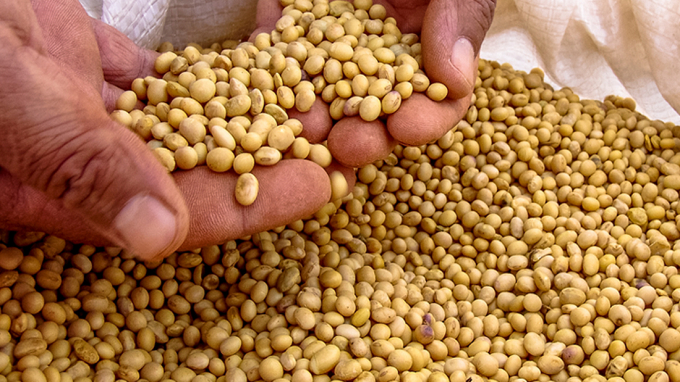October 27, 2025 | 01:06 GMT +7
October 27, 2025 | 01:06 GMT +7
Hotline: 0913.378.918
October 27, 2025 | 01:06 GMT +7
Hotline: 0913.378.918

Soybean imports to Vietnam strongly increase
According to the General Department of Customs, in January 2021, soybean imports to Vietnam reached 143,780 tons, valued at US$ 73.66 million, up 13.9% in volume, up 18% in turnover over December 2020. In comparison with January 2020, soybean imports in the first month this year have strongly increased in both volume and turnover with the corresponding up rate of 60.5% and 98.5%.
The US and Canada are the two main markets that supply Vietnam with soybean in January. Particularly, most of the soybeans come from America. To be specific, Vietnam has imported 133,659 tons of soybean from the US, valued at US$ 68.19 million, 154.7% higher in volume, 19.4% higher in turnover compared to December 2020, which accounted for 93% of the country’s total volume and turnover of imported soybeans.
Soybean imports from Canada reached 7,865 tons, equivalent to US$ 4.39 million, up 7.8% in volume and 19.7% in turnover compared to December 2020.
As a result, Vietnam’s soybean importation at the beginning of this year has sustained last year’s growth rate. In 2020, 1.87 million tons of soybeans had been imported to Vietnam, valued at US$ 773.73 million, up 11% in volume and 14.8% in value compared to 2019.
The US was also Vietnam’s biggest soybean supplier in 2020 with 932,000 tons, valued at US$ 396 million, up 23.13% in volume and up 30% in value over 2019. Brazil ranked second with 737,000 tons, valued at US$ 287 million. Canada came third with 110,000 tons, valued at US$ 50 million.
Vietnam imports soybeans mainly for animal feed production and partly for human food such as soybean oil production… Vietnam has soybean production but the output can only meet below 10% of the needs due to small acreage and low productivity. Soybeans produced in Vietnam are primarily used for food processing for human consumption such as soymilk, tofu,…

Imported soybeans are commonly used in cooking oil production
Therefore, each year, Vietnam has to import a massive amount of soybean and the tendency to import is gradually increasing, especially when the aminal feed industry and the vegetable oil industry are expanding their processing capacity in recent years.
As stated by Niesel, the oil market scale in Vietnam at the moment is roughly VND 30,000 billion each year and continuously increasing through the years. Subsequently, domestic and foreign enterprises are investing considerably in the cooking oil industry, with soybean oil being the most commonly consumed oil in Vietnam.
Translated by Samuel Pham

(VAN) Building on its leading position, Ho Chi Minh City drives a green, digital, and creative wood industry toward global reach and its goal of joining the world’s top 100 most livable cities by 2045.
/2025/10/25/0325-1-nongnghiep-130321.jpg)
(VAN) The 2024–2025 crop year of Viet Nam's coffee industry has ended with record export turnover of USD 8.4 billion. Since the beginning of this year, exports have already surpassed USD 7 billion.

(VAN) Vietnam and Chile are seeing opportunities to deepen their agricultural cooperation, especially as both share a common vision of sustainable development and trade integration.

(VAN) Strong export growth across industries drives Phu Tho’s economic breakthrough and contributes to achieving overall growth goals.

(VAN) During the first 7 months of 2025, Russia boosted its share of Chinese poultry imports to a record 18%, up from 14% the previous year.

(VAN) By October, fruit and vegetable export turnover is estimated to exceed 7 billion USD. This marks the second consecutive year that the sector has surpassed this milestone.

(VAN) Mr. Hamish Marr, New Zealand’s Special Agricultural Trade Envoy, shares experience in developing sustainable, transparent, and value-added agricultural export chains.